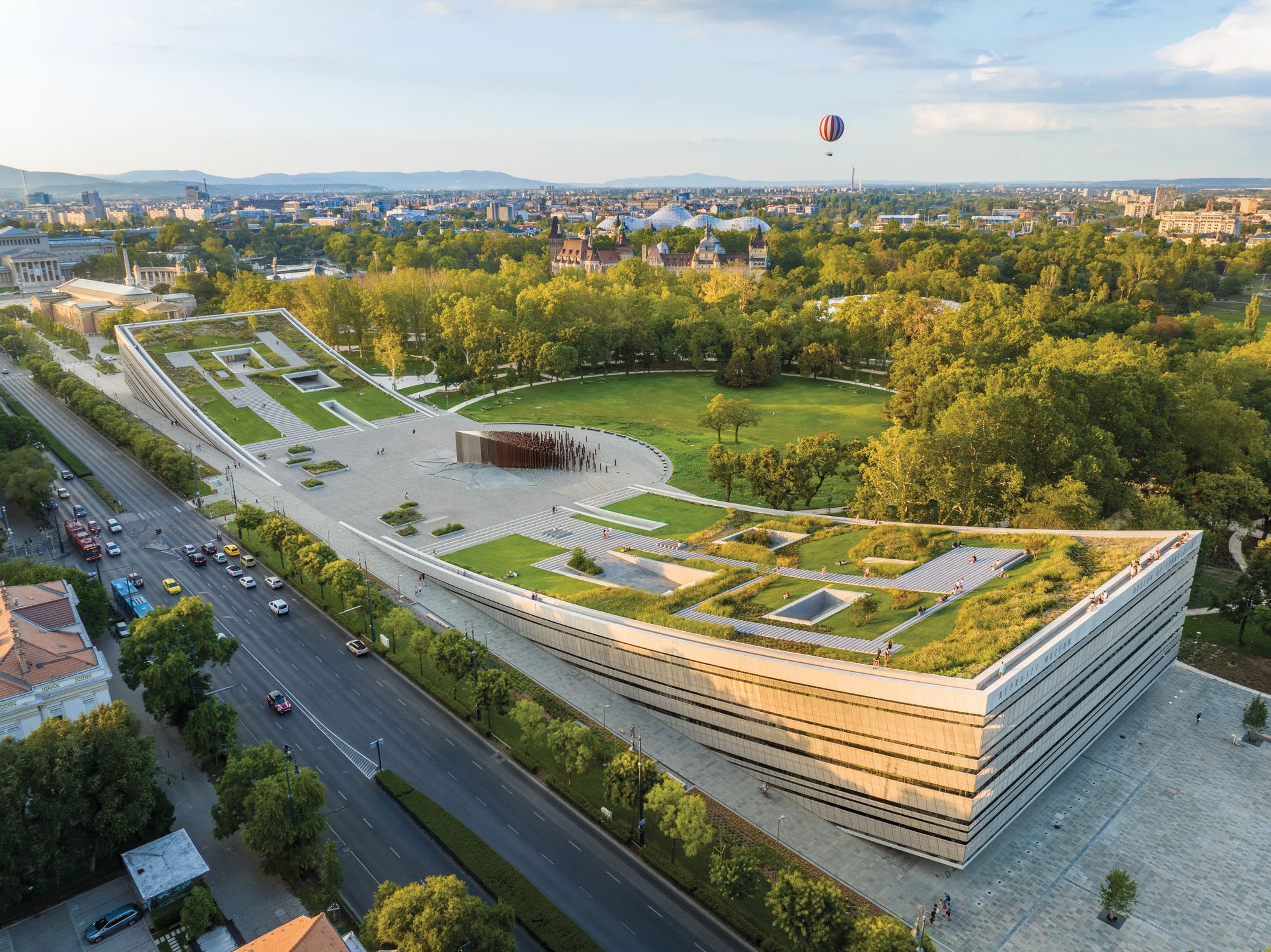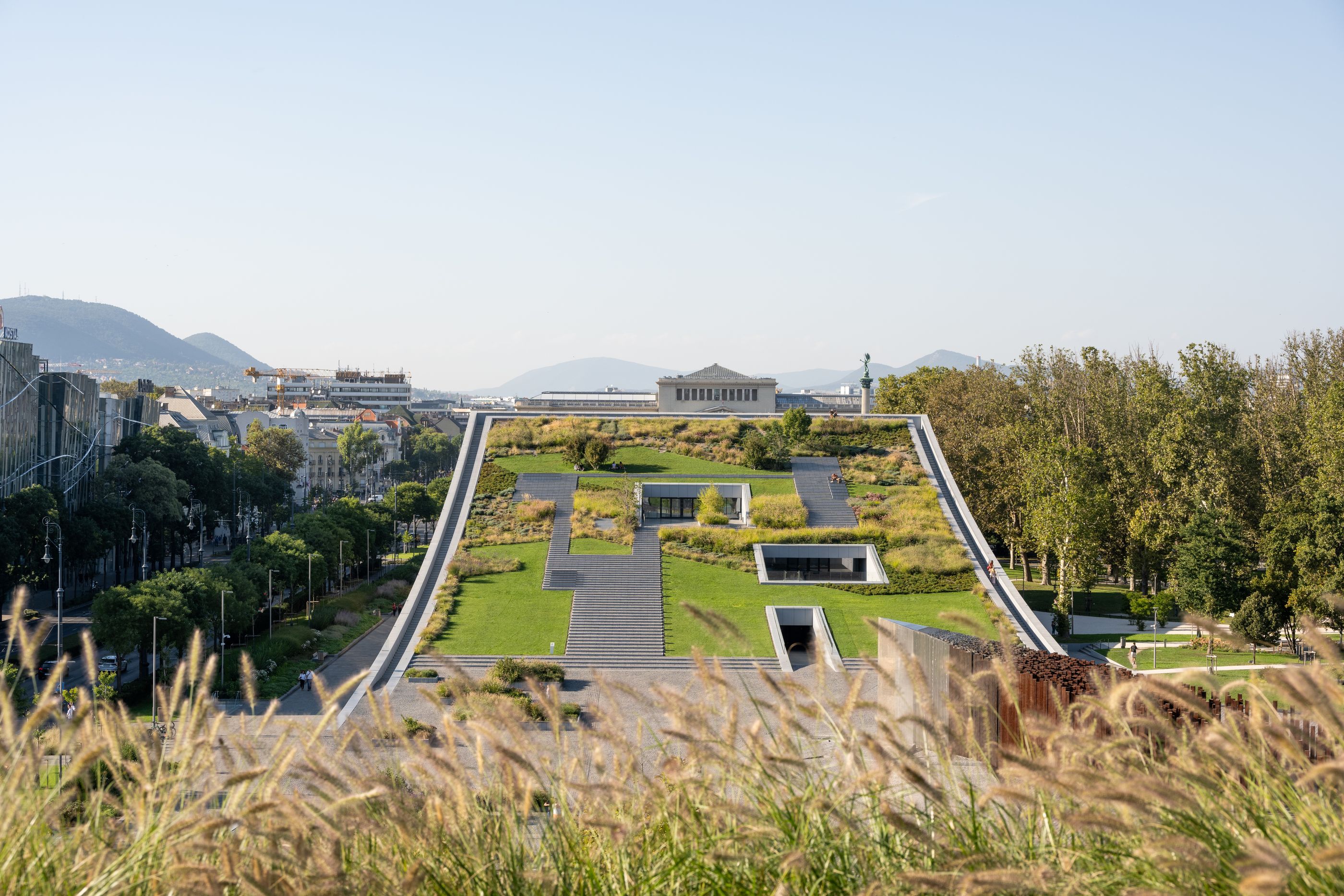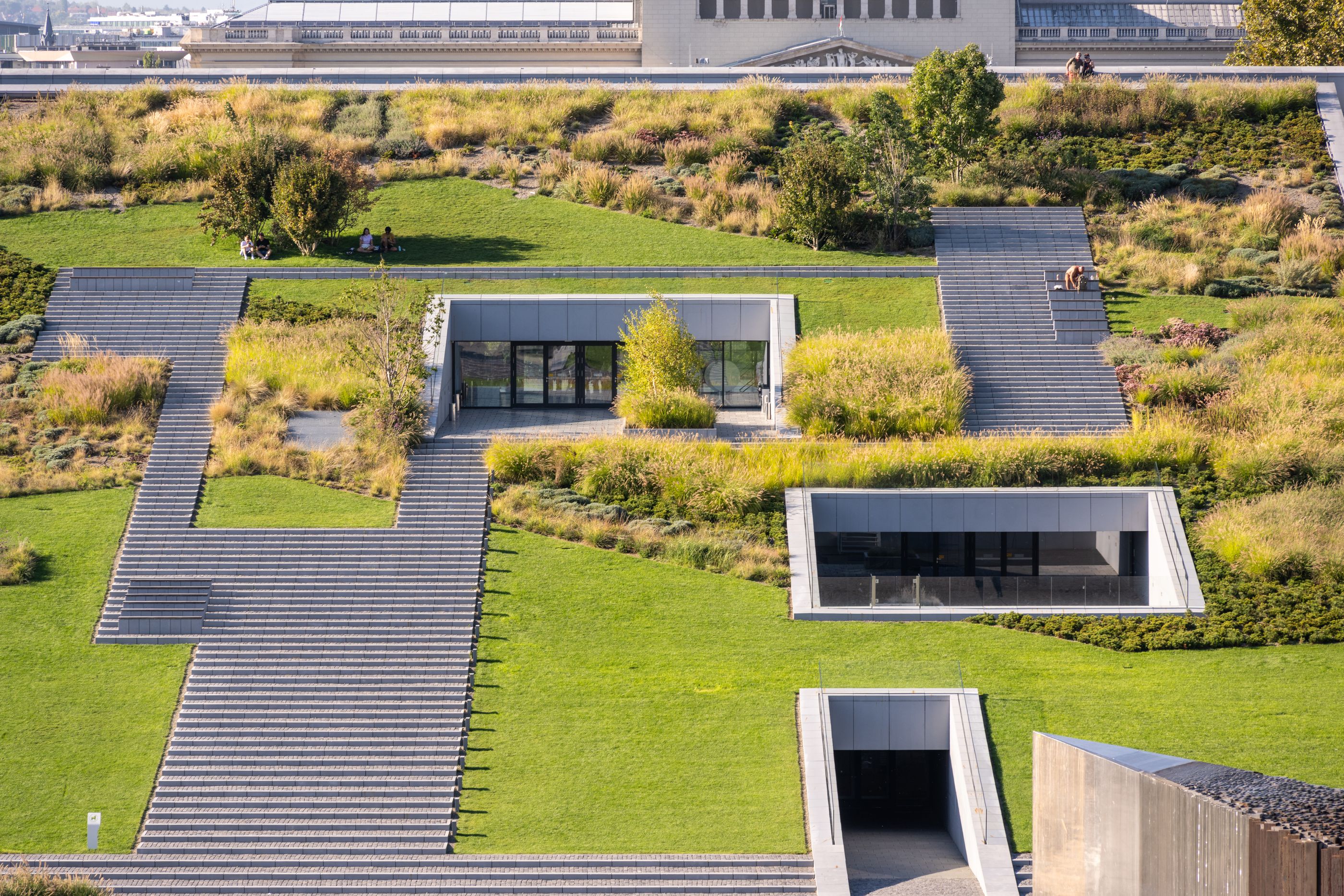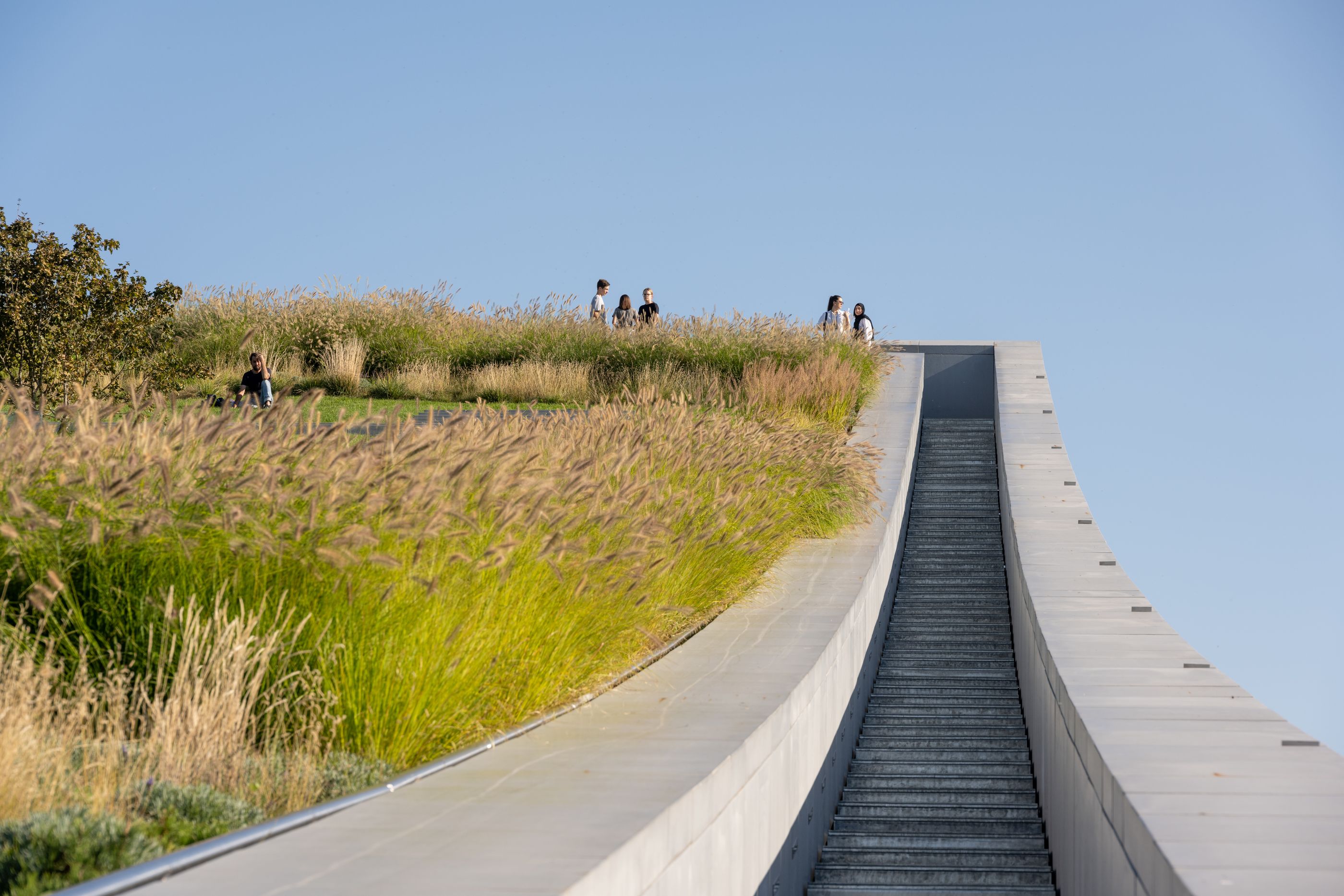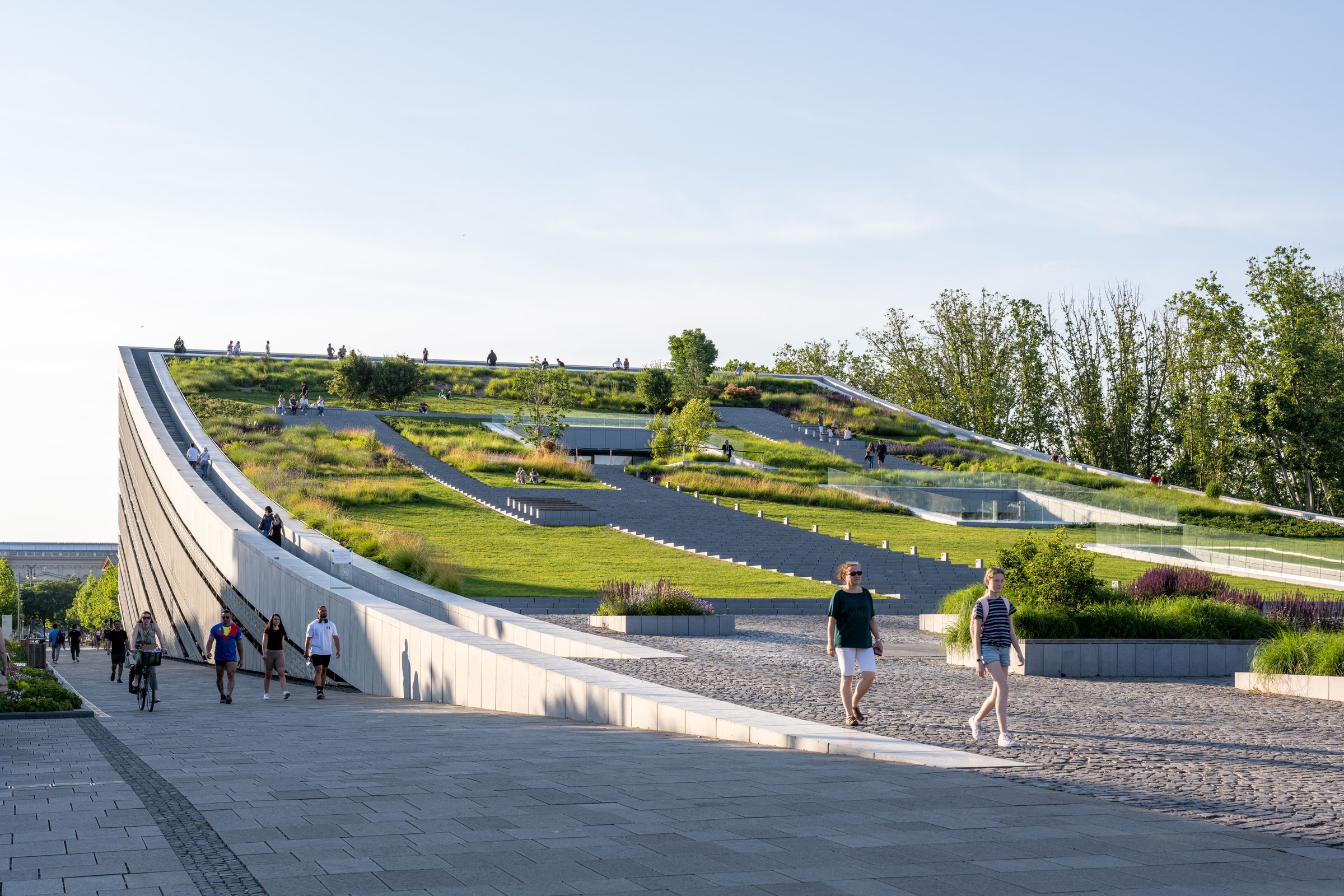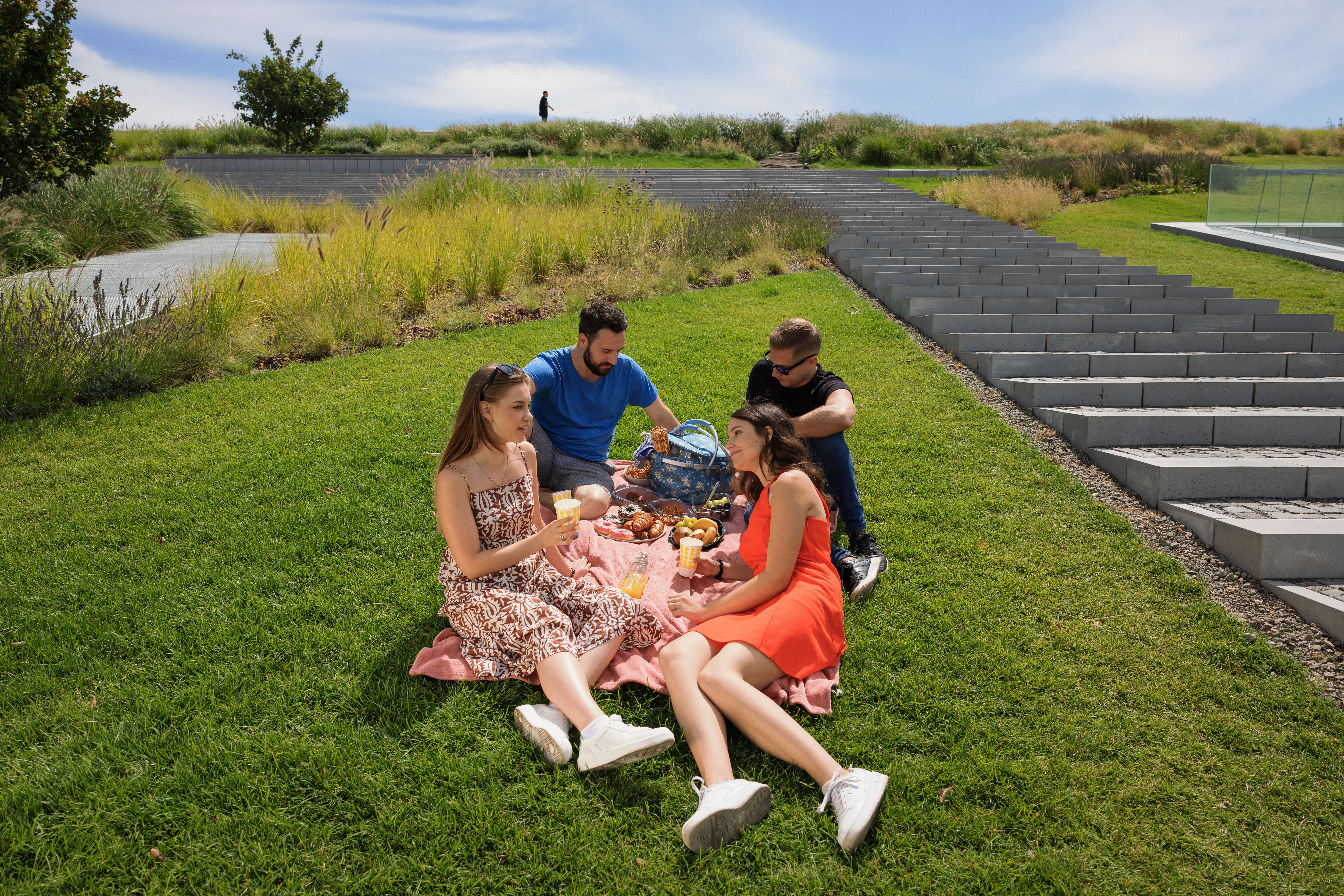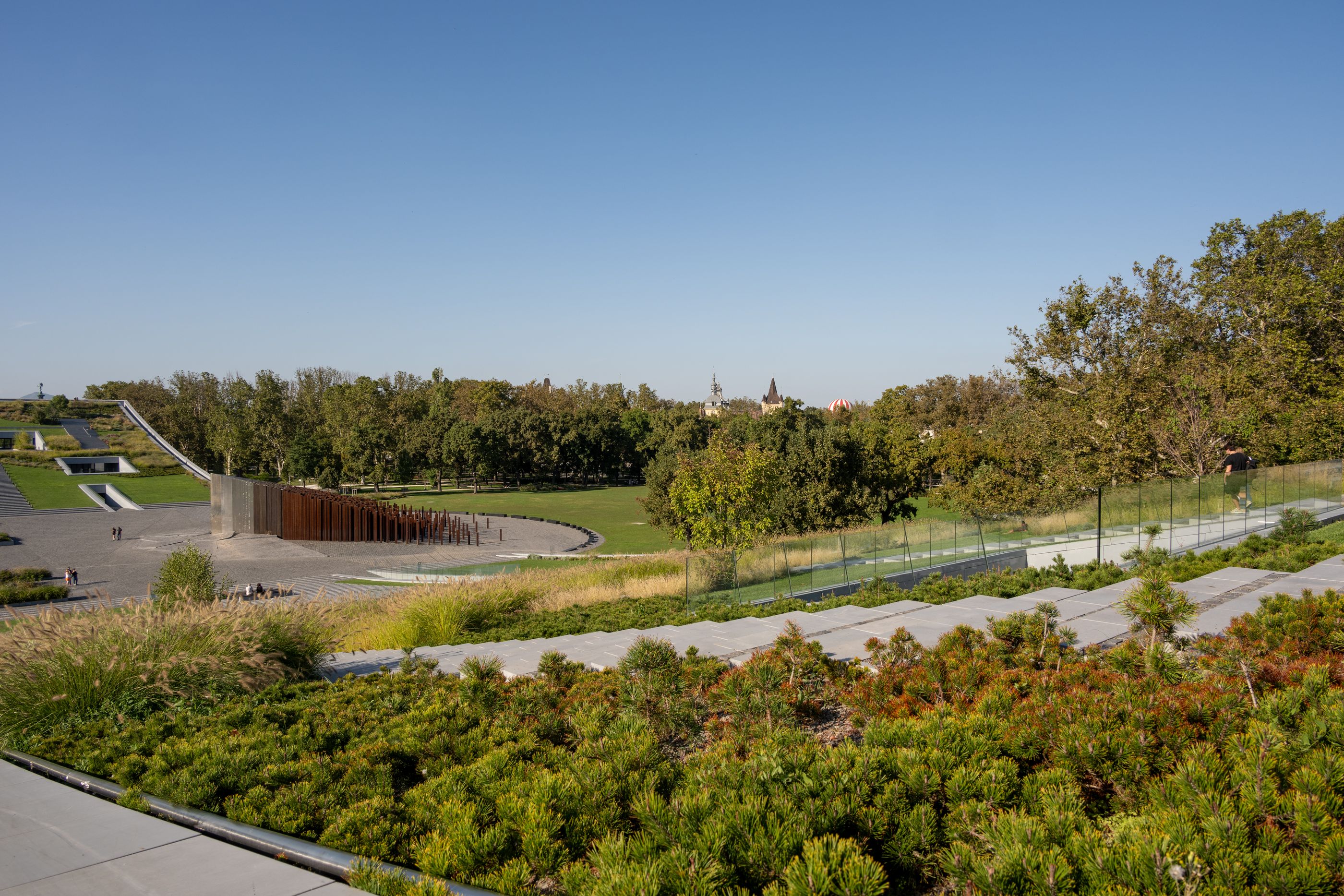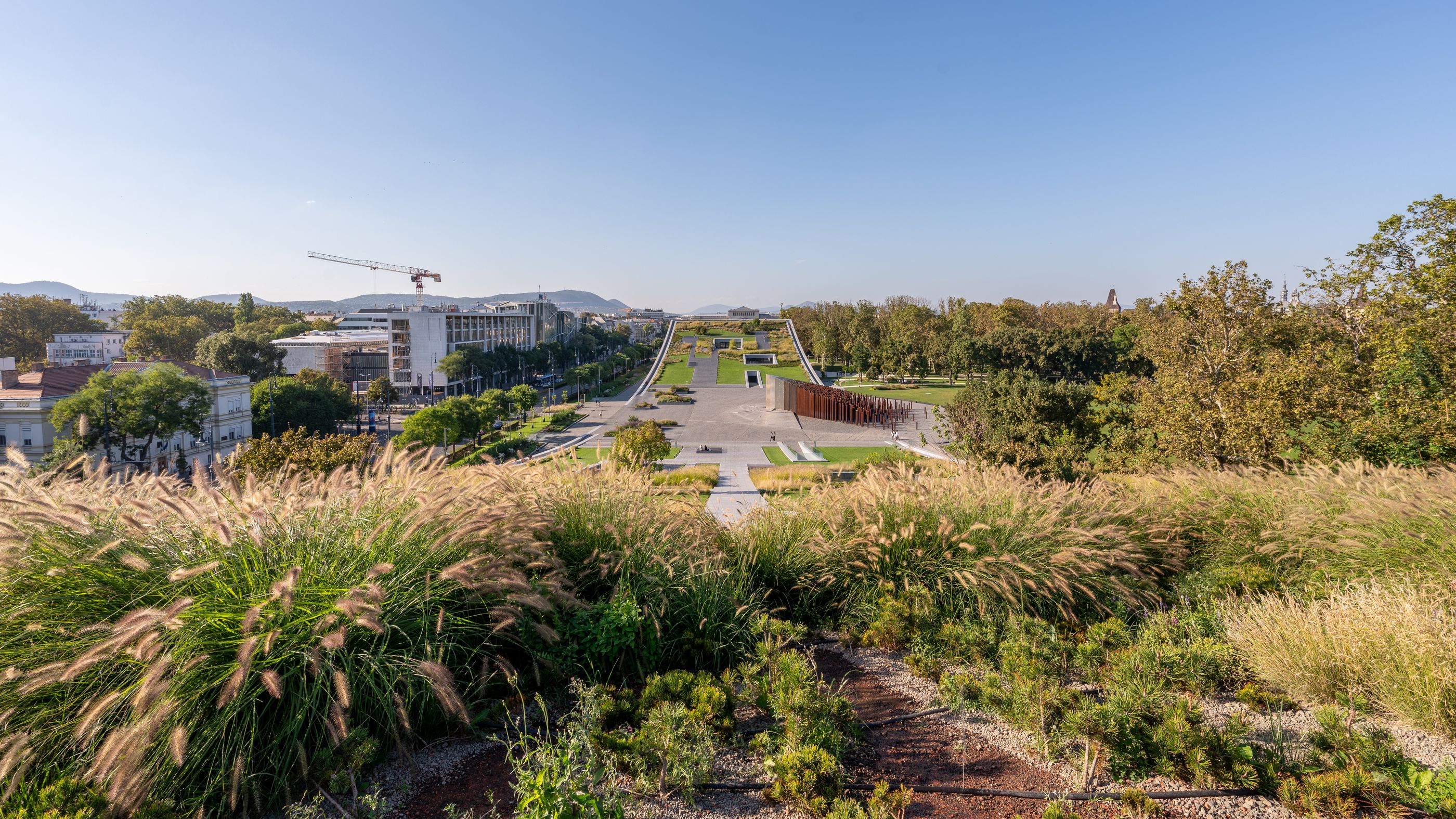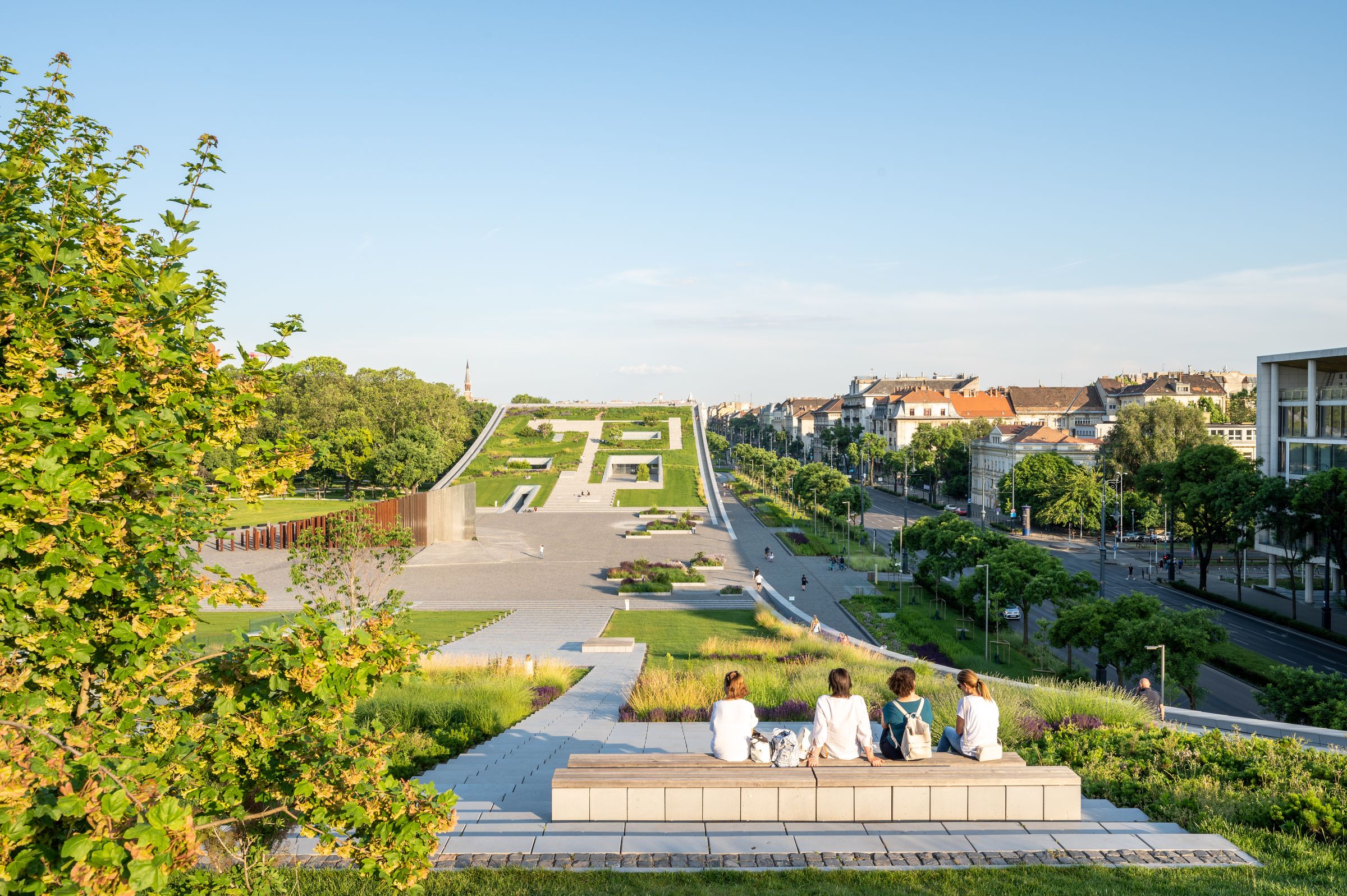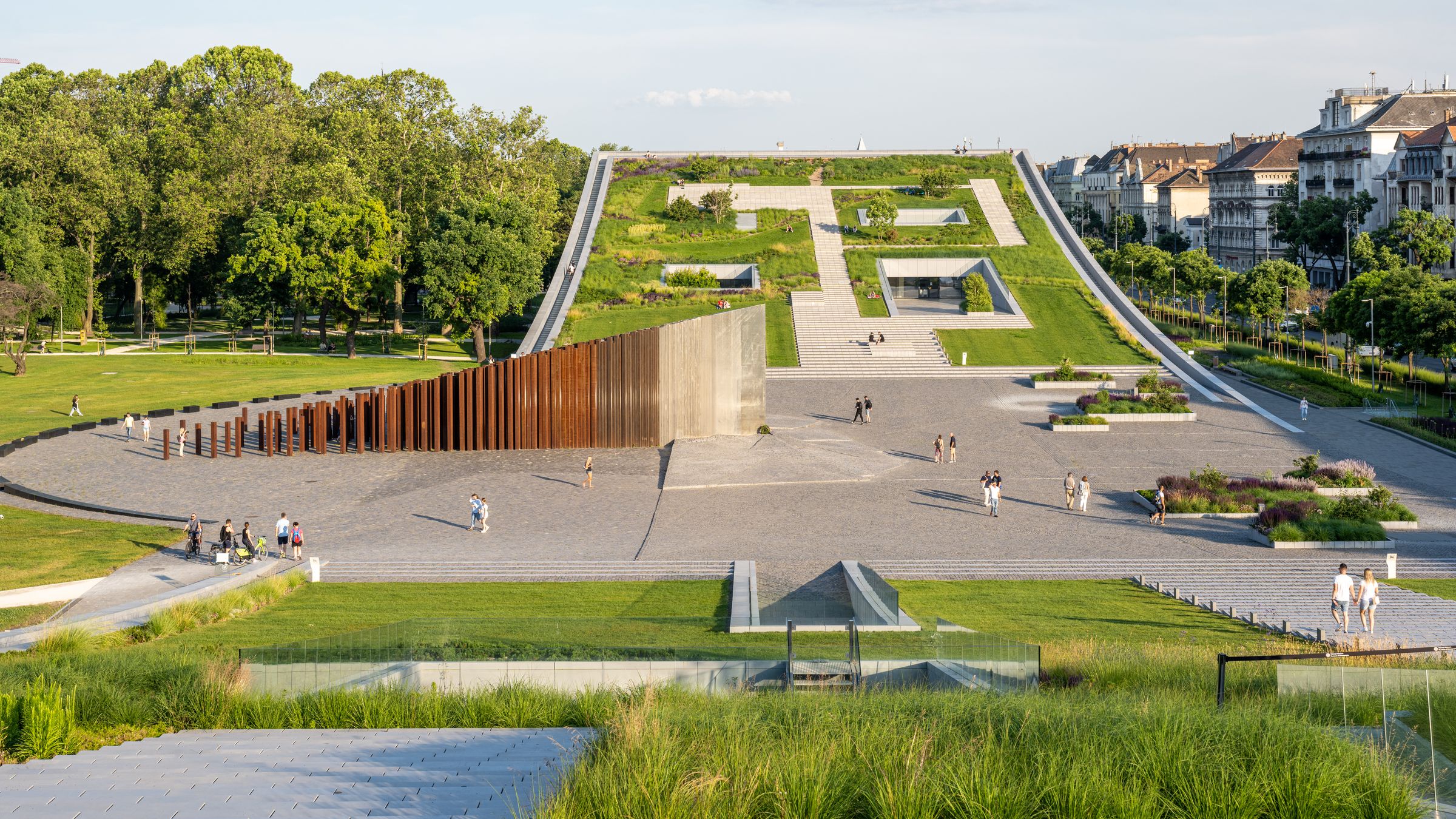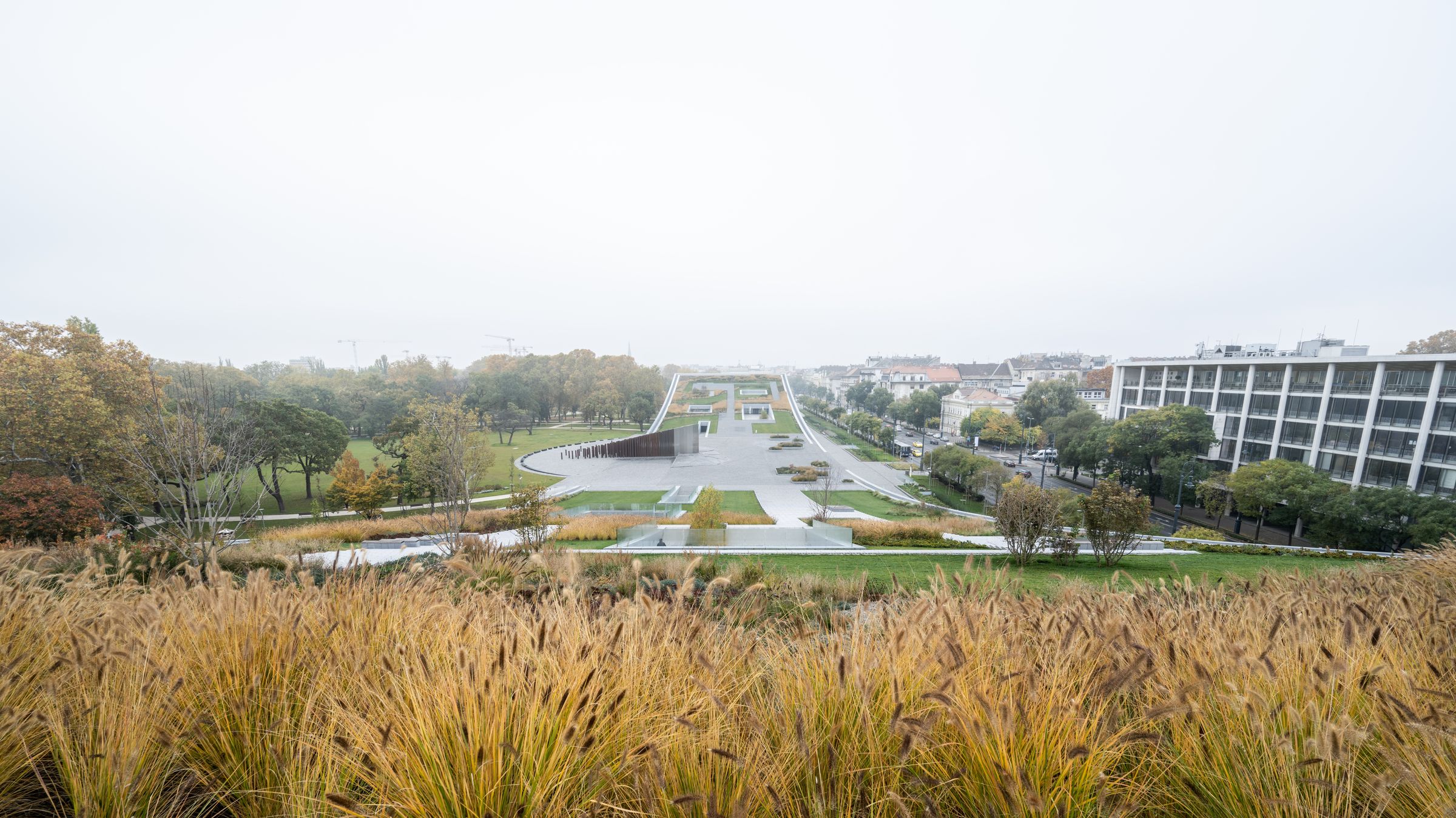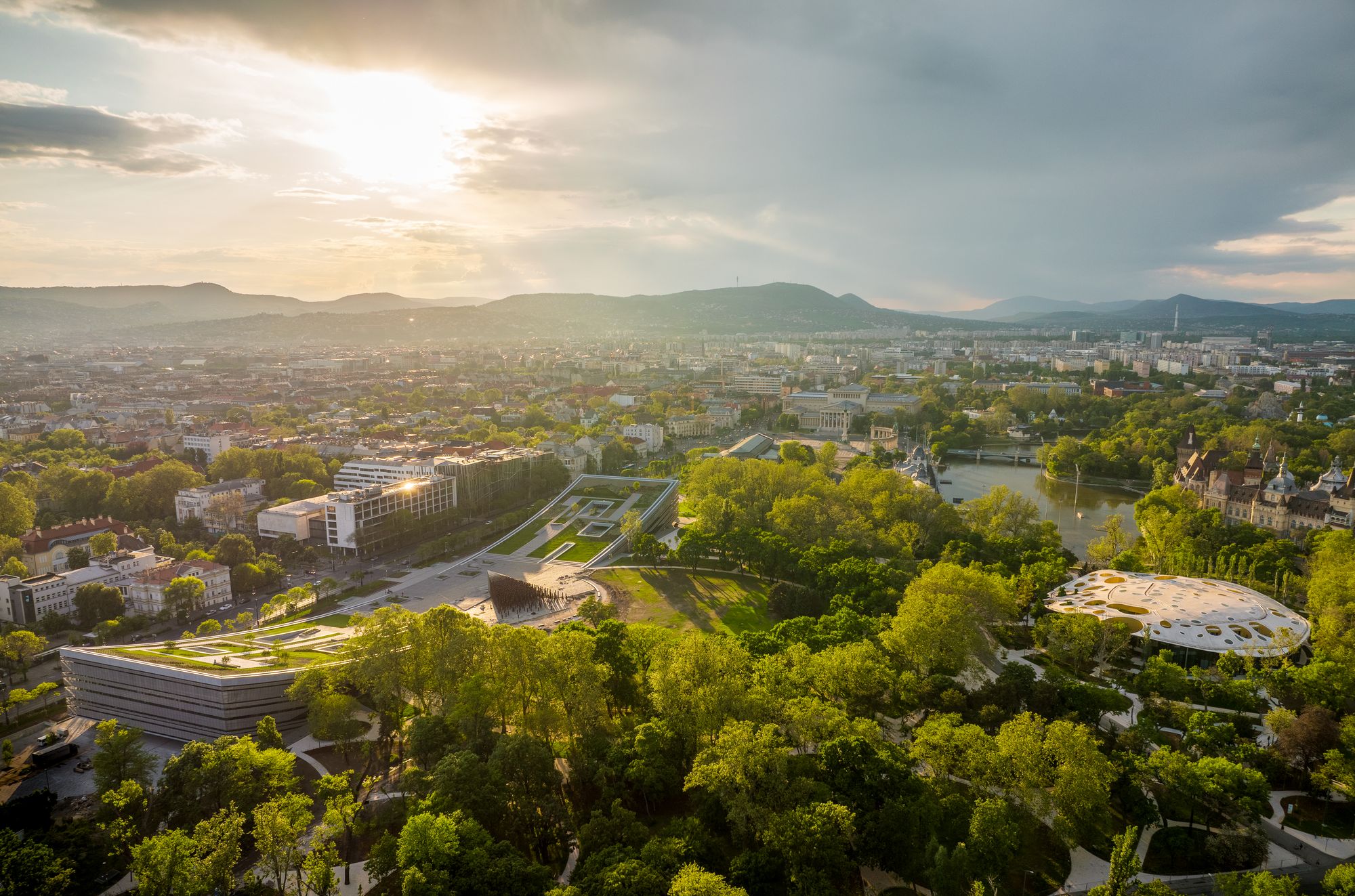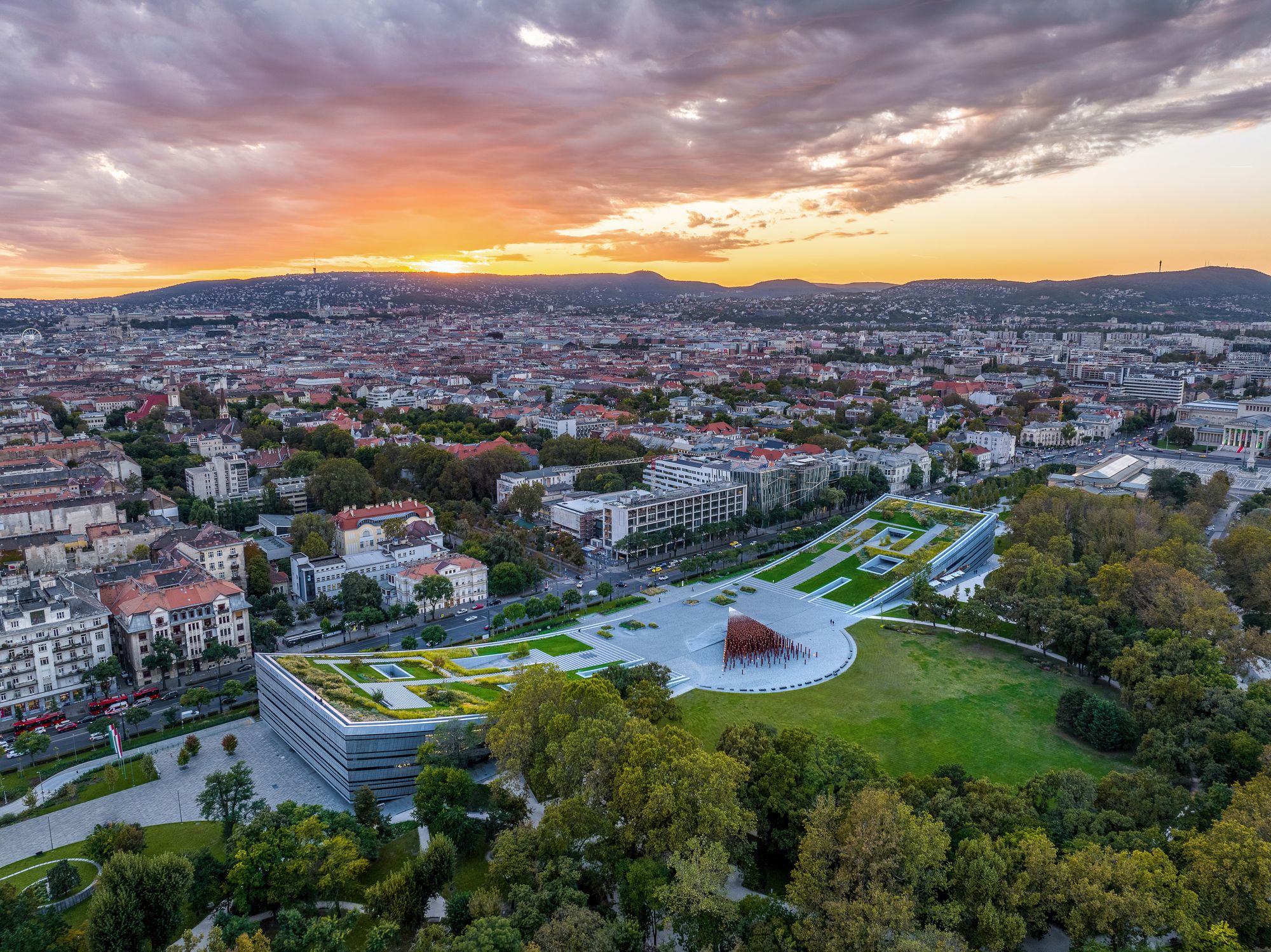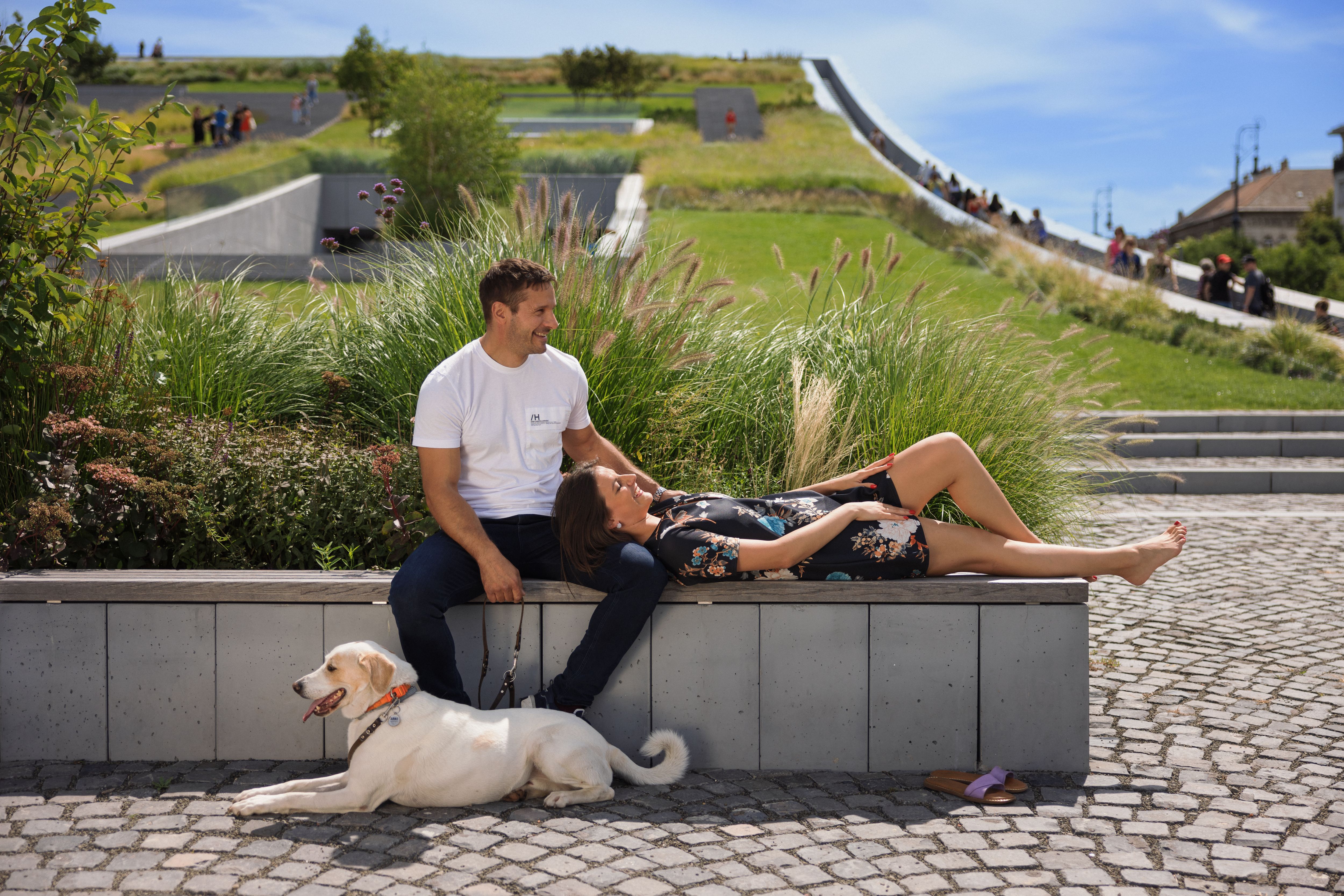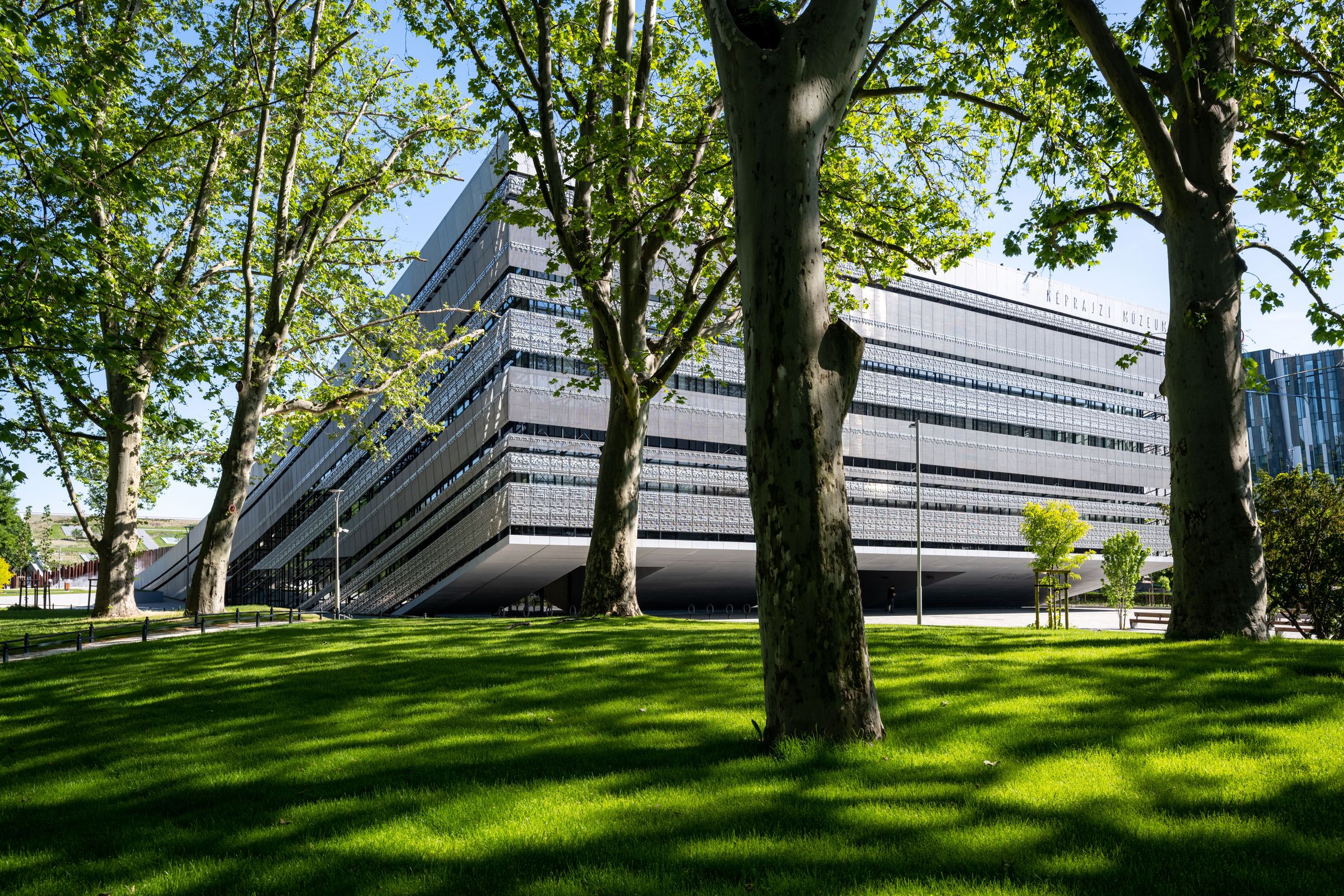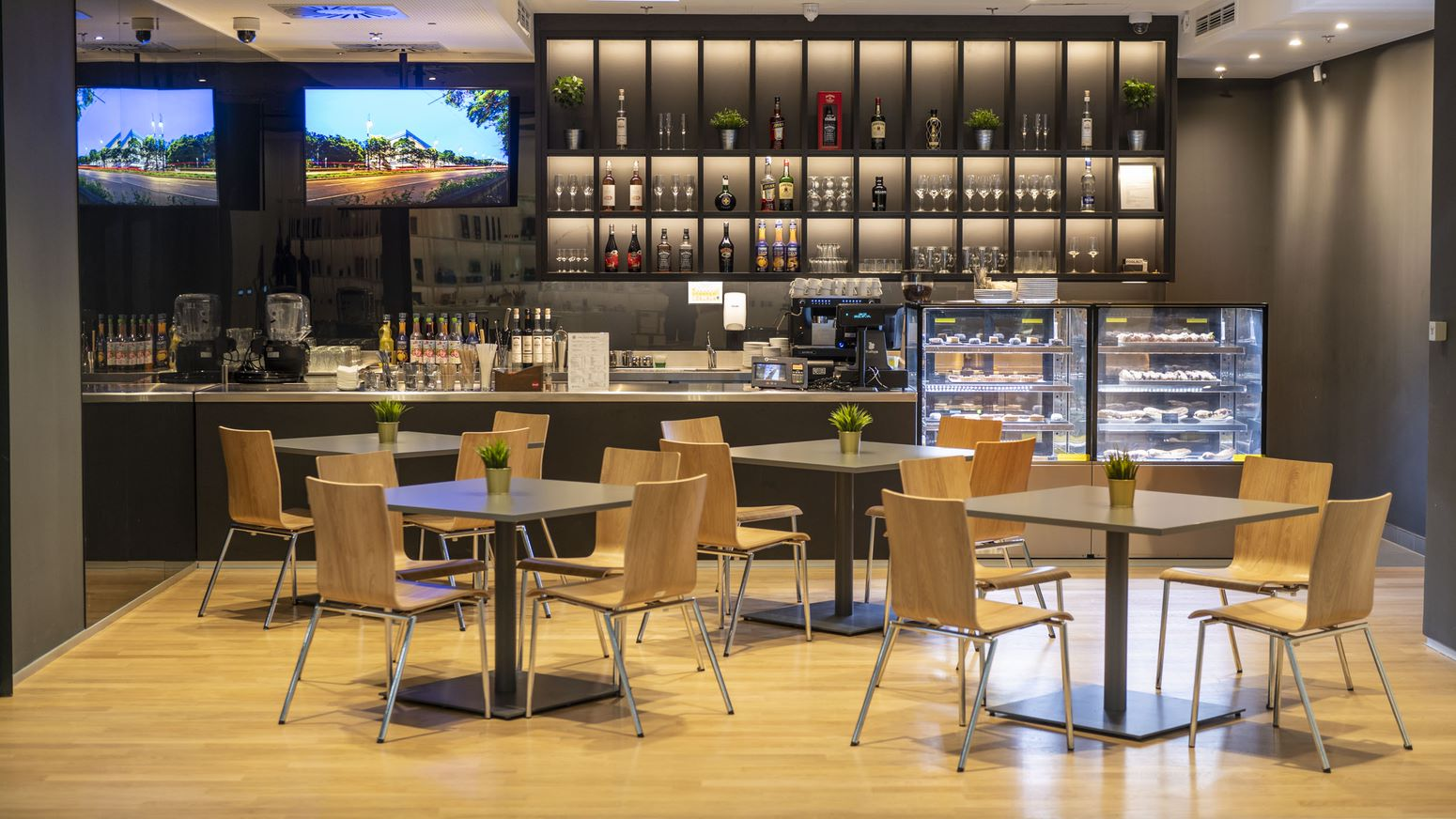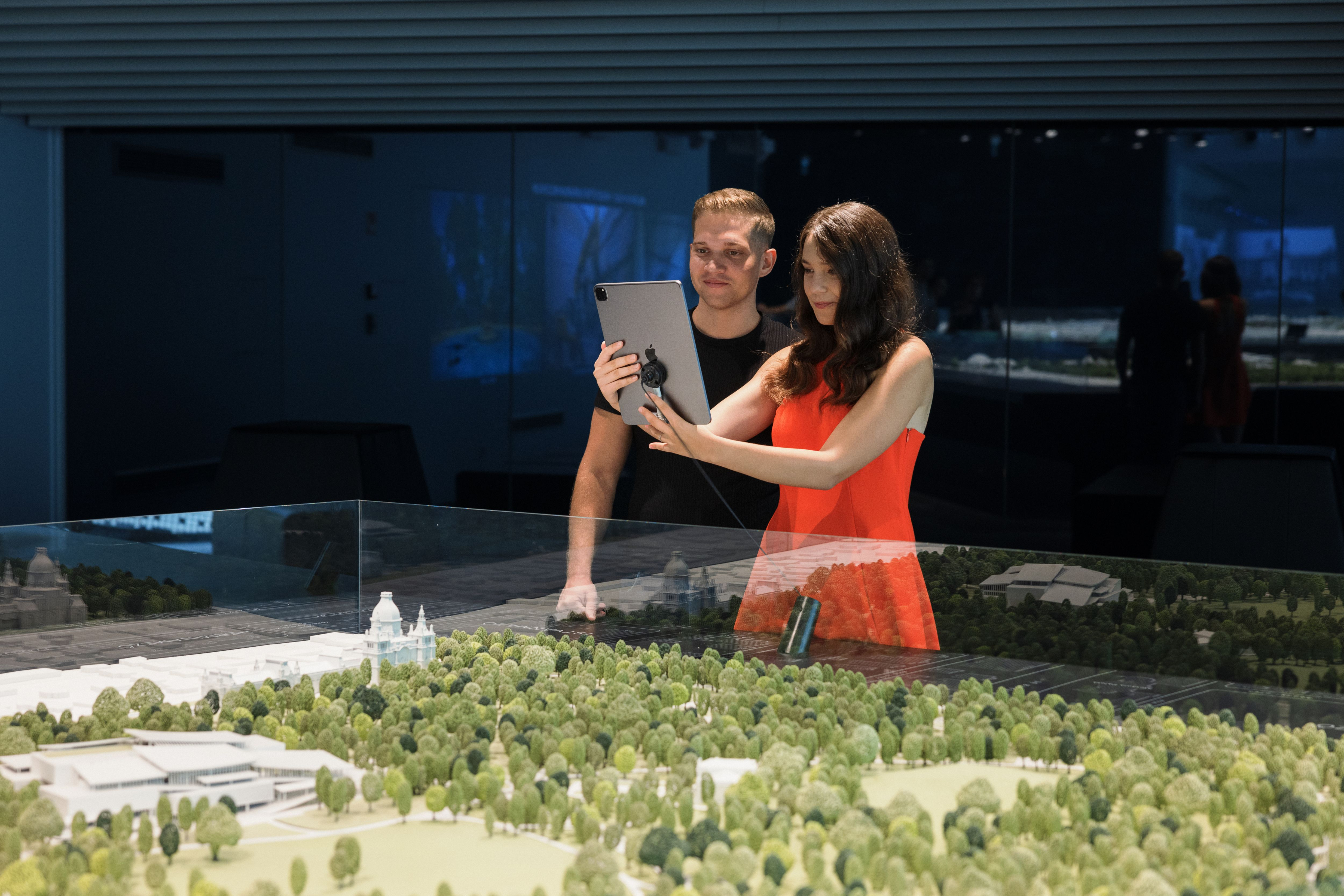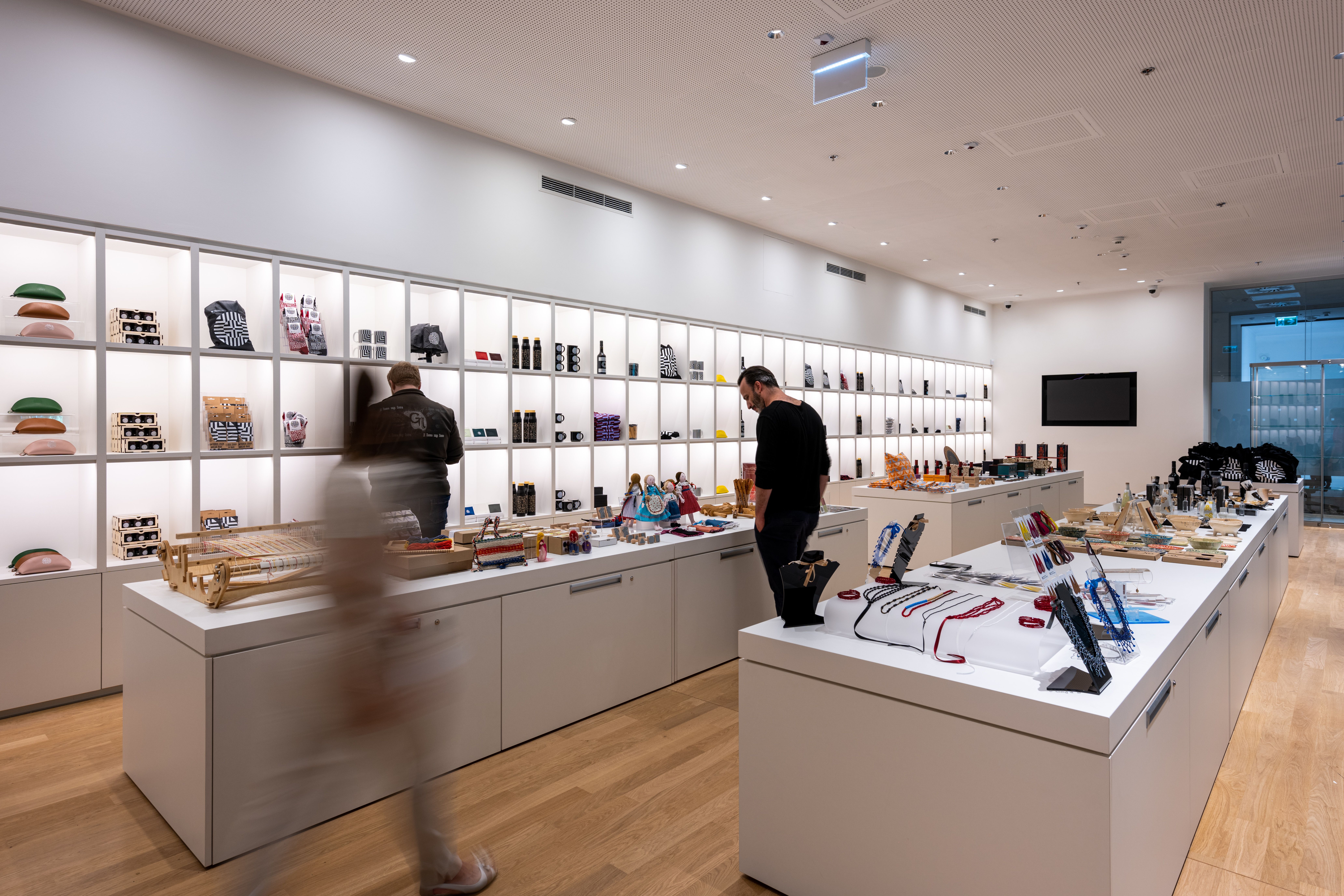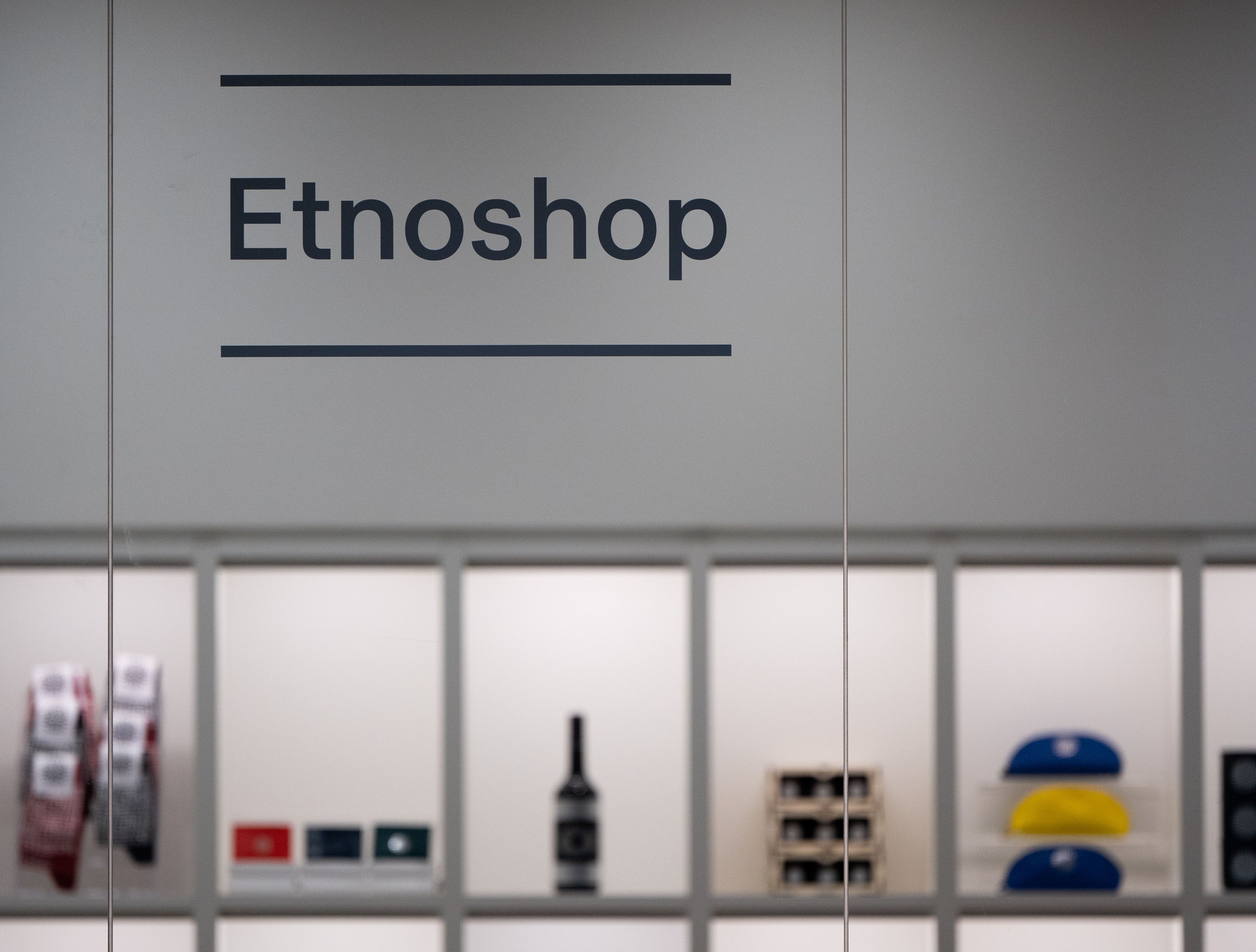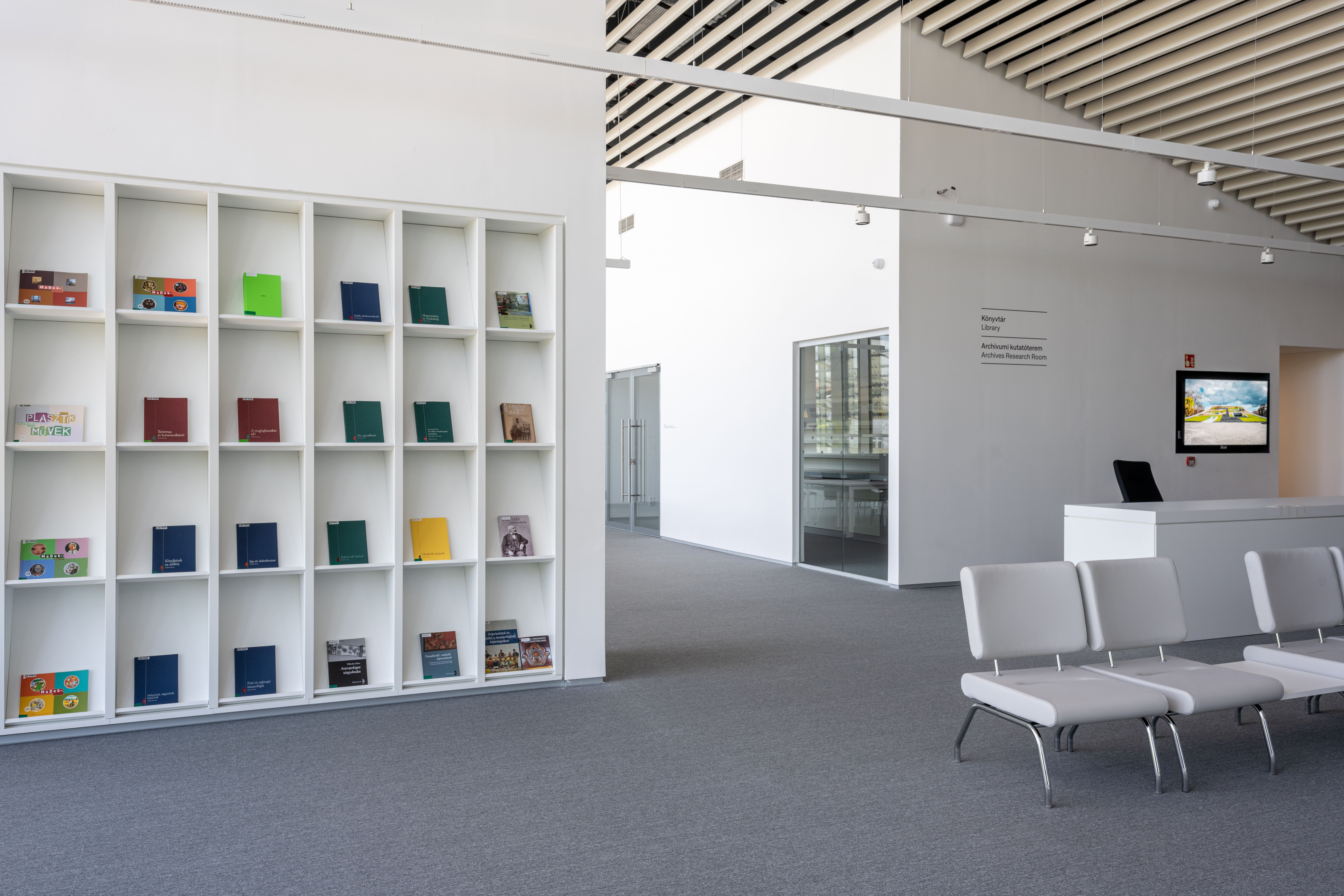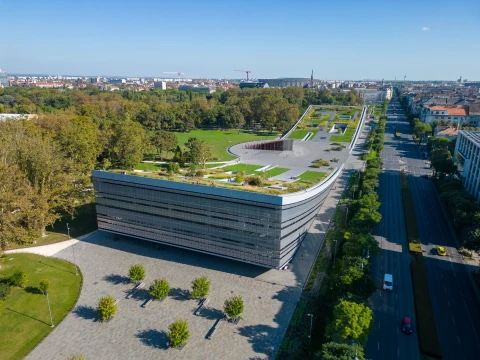
Museum of Ethnography

The most modern ethnographic institution in the world hidden beneath a green roof
The Museum of Ethnography, currently the world’s most modern institution of ethnography. Designed by a Hungarian architect, its contemporary building will immediately strike you with its shape and special green roof. The jury of the international design competition selected Marcel Ferencz’s design from a line-up of world-class architects. The spectacular building is shaped like two intertwined hillsides and is covered by a roof garden with an area of over 7,000 square metres. It also houses one of the most important public collections in Hungary, and as a new gateway to the City Park it is connected to the Liget’s continually renewing cultural and recreational programme as a diverse communal space.
Did you know?

An anonymous, restricted international design tender was announced for the design of the museum within the framework of the Liget Budapest Project. The contenders included world-famous architects such as the Pritzker Prize-laureates, Zaha Hadid and Rem Kolhaas, as well as Bernard Tschumi Architects and the Björke Ingels Group. Out of these star competitors the jury selected the project submitted by NAPUR Architect, led by Marcel Ferencz.
Whether you are coming from...

Heroes’ Square, Damjanich Street or any other direction, it is worth walking to the middle of the building, where the Fifty-Sixer Monument is located , because this is when the two hillsides of the building, which are connected under the ground level, are revealed in the most spectacular way. A unique feature of the building is immediately apparent: a glass façade embracing the hillsides and clad by nearly half a million small pixels arranged in myriads of diverse shapes. The patterns were designed through the contemporary fusion of twenty Hungarian and twenty international ethnographic motifs (including Venezuelan, Congolese, Cameroonian, Mongolian, Chinese and Melanesian). A special robot inserted the small pixel cubes into the more than 2,000 laser-cut aluminium gratings attached to the building.
Tip: Find a Hungarian folk motif among the pixels, take a photo of it and post it on Facebook or Instagram, with the hashtag #Néprajzimuzeum.
Budapest’s first roof garden
Another immediately striking feature of the building is its huge roof garden, which pretty much functions as a green extension of the City Park and has become one of its most popular community spaces. You can simply lie down in the grass and admire the variety of plants, or even have a picnic here. The roof is also a great place to take children, and in summer a misting system is installed to cool them down after they have been running up or rolling down the hillside. If you wish to see the City Park and Heroes’ Square from above, walk up the steps along the perimeter of the building and have a look around. If you are a sports enthusiast, you can do the same during the hours when there are not many visitors around.
The entrance from Heroes’ Square: points of interest and delicacies
The main entrance is located on the ‘hillside’ of the building facing Heroes’ Square. You can access the Liget’s Budapest Visitor Centre from here and get all the information you need about the renewed City Park in one place and you can buy tickets for the events of the institutions in the City Park easily and conveniently. You can view the spectacular and free interactive exhibition on Budapest’s urban history in the Visitor Centre too, and discover interesting facts about the Liget Budapest Project. You will also find a mock-up here, which allows you to cast your vote on your favourite building in the City Park. If you feel like relaxing a bit before exploring the City Park, this is the ideal place to do it. Next door to the Visitor Centre is the Ethnobistro, serving lunch and coffee.
More information about the Visitor Centre can be found here.
The exhibition
Walking on towards the central part of the building, you can explore the ceramics collection and peek into the ZOOM space. Go on until you reach the middle, where the exhibition spaces open up before you. The Ceramic Space with 4,000 artefacts displayed along the stairs running through the building is the museum’s free exhibition. From here you can enter the new permanent exhibition of the Museum of Ethnography, which is bigger and more comprehensive than ever before: 3,600 or so artefacts are arranged into eight thematic units on a floorspace of over 3,000 square metres. In addition to the invaluable objects of Hungarian folklore, you can view the most extensive ethnographic material in the region presenting the culture of distant peoples, illustrating the various facets of everyday life, human existence and community relationships from the 17th century until today. You can fly back in time and embark on a journey through the world with Béla Bartók, who travelled from Kalotaszeg to Africa collecting folk music with a phonograph, with Lajos Bíró, who explored Oceania, and with István Györffy, who researched archaic folk culture. You can discover the famous cultural regions of Hungary and the most well-known objects of Hungarian folk art, while, thanks to multimedia installations, you can immerse yourself in the collections preserving a rich material of film, photography and folk music.
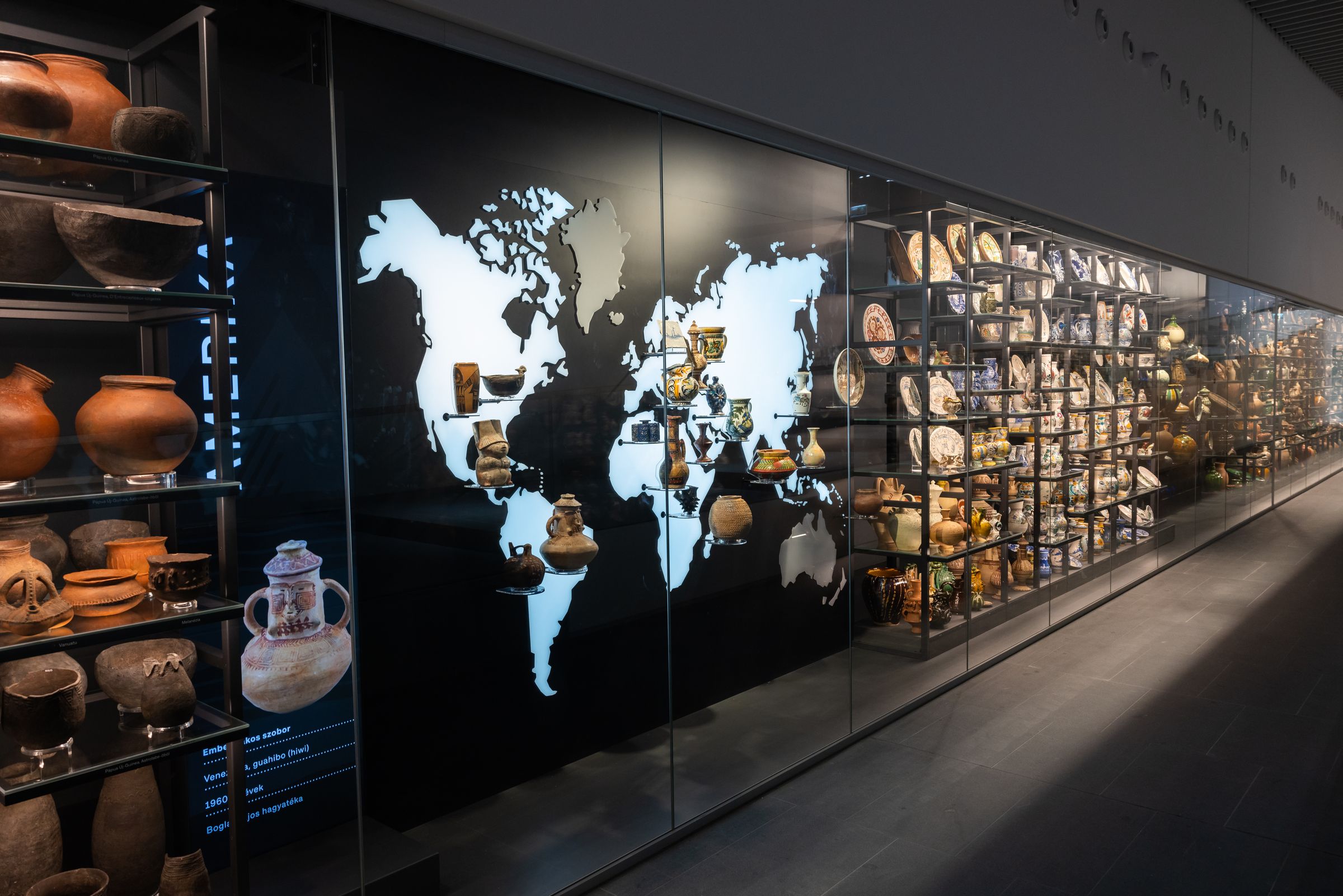
How was it made?
The building of the Museum of Ethnography was designed to meet the most up-to-date requirements and, therefore, the exhibition spaces are all under the ground, in the ‘belly’ of the building. This serves a useful purpose since sunlight, which can damage the artworks, can be blocked, and it is also easier to keep the humidity and temperature within the ideal range.
Entrance from the Museum Underground Parking: knowledge and gifts
Located in the wing facing the Museum Underground Parking is the Ethnoshop, which stocks an array of wonderful, reimagined folk art products and design objects of everyday use: exclusive, small-series collections crafted with traditional, folk methods as well as a wide range of home décor and fashion, products, toys, DIY sets, and much more. Opposite the Ethnoshop you will find the museum’s bookstore, called Etknow, holding a rich body of knowledge related to the collections. If you just fancy a bite of something or a lovely cup of coffee with some dessert, there’s no need to walk over to the Ethnobistro: the small cosy café next to Etknow also has a great selection.
A brief history

The Museum of Ethnography did not so much move to the City Park, but rather came home to it: the ethnographic collection was first presented to the public here in the Ethnographic Village of the Millennium Exhibition of 1896 and then, for many years, in the large Industrial Hall in the City Park.
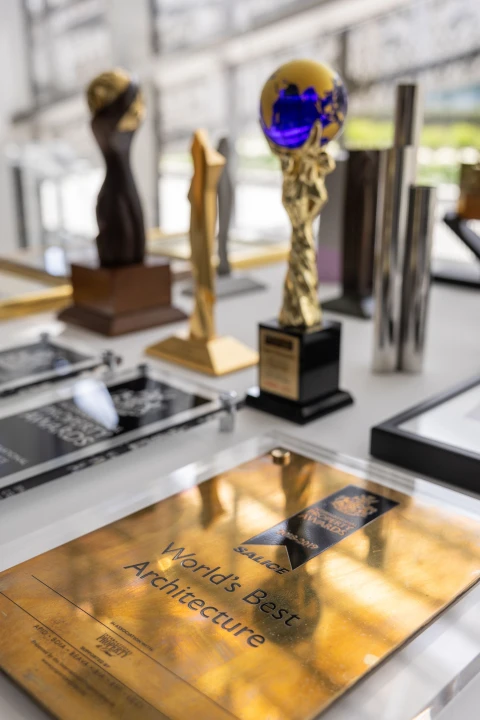
Awards of the Museum of Ethnography
- International Property Awards – A világ legjobb középülete, 2018
- International Property Awards - World’s best architecture fődíj, 2018
- II. Építészeti Szalon - Közönségdíj, 2019
- LICC – London International Creative Competition, 2022
- BLT Built Design Awards – World’s Best Architecture, kulturális kategória győztes – 2022
- Inside Quality Design – Best Project of the Year, 2022
- Idea-Tops Award – Cultural Architecture, Design kategória, 2022
- German Design Awards, Frankfurt, Germany: „Excellent Architecture” SPECIAL MENTION, 2022
- Archello / Best Projects of 2022
- BEST OF IGLOO - 2022
- International Architecture Award, 2023
- Time Magazine - World's Greatest Places, 2023
- International Federation of the Roofing Trade - IFD Award Ezüst érem (Lapostető Szekció), 2023
- Nívó díj - Építési Vállalkozók Országos Szakszövetsége, 2023
- DNA – Paris Design Awards, 2023
- ARCHITIZER A+ AWARD „Architecture + Facades Category”, 2023
- ARCHITIZER A+ AWARD „Architecture Museum Category”, 2023
- FIABCI Prix d'Excellence Awards, legjobb nemzetközi középület, aranyérem, 2024
- Architecture Masterprize, Cultural Architecture, Best of Best, 2024
- IF Design Awards, Best exhibition design, 2025
